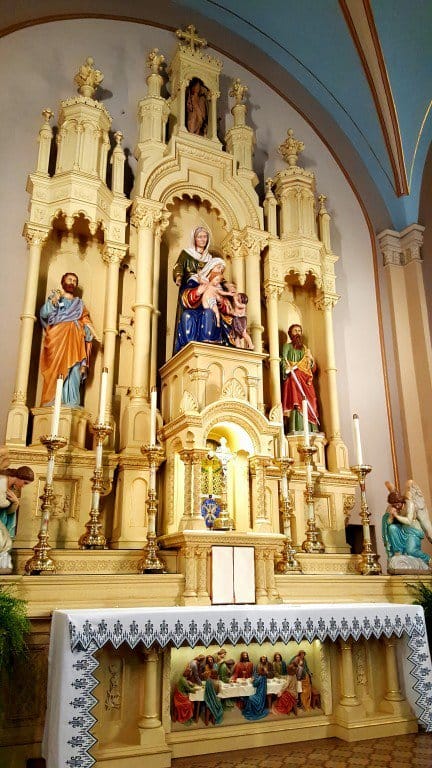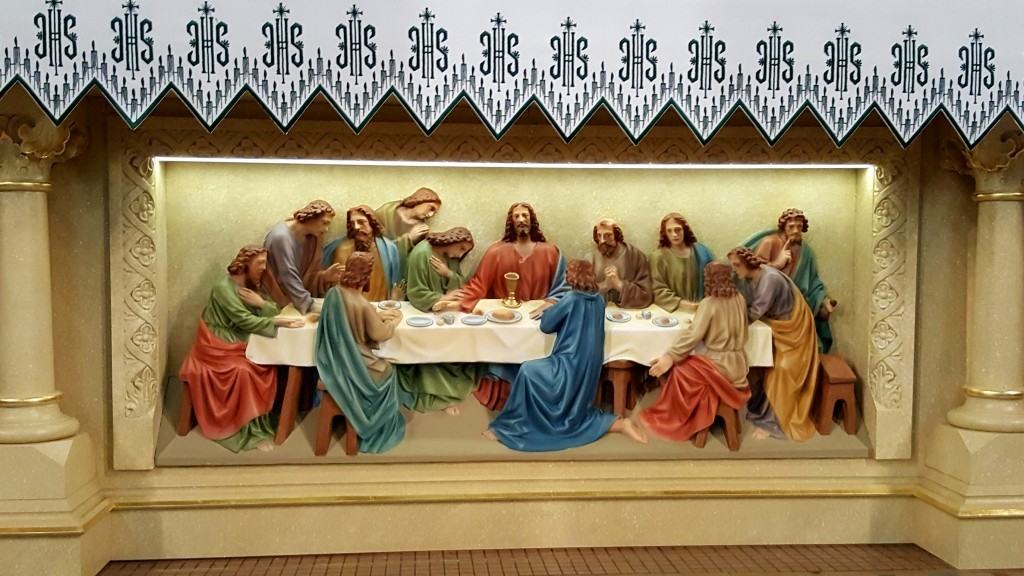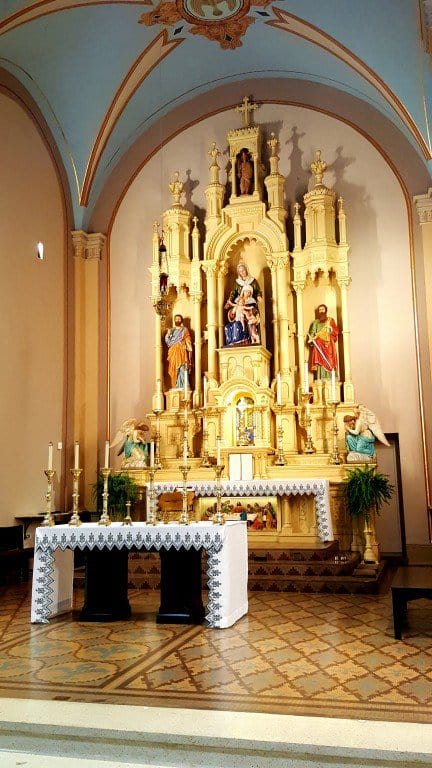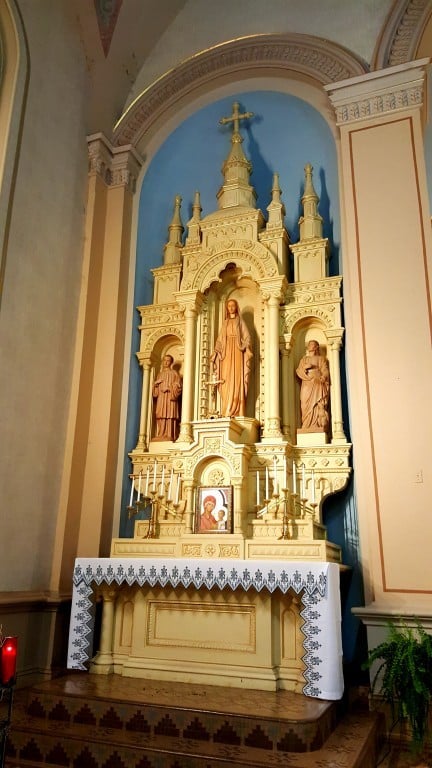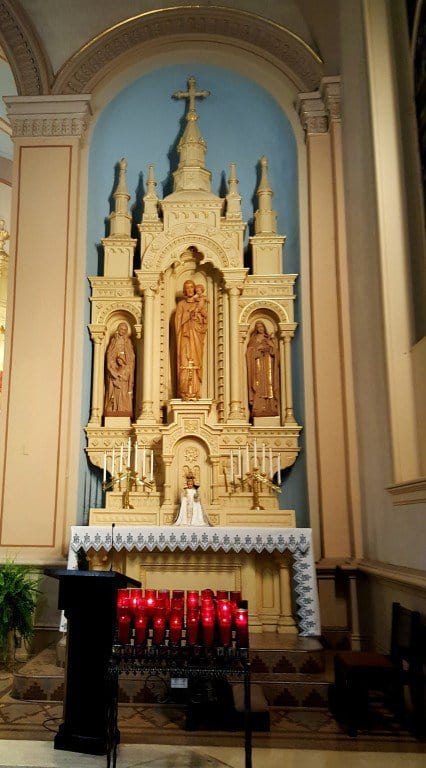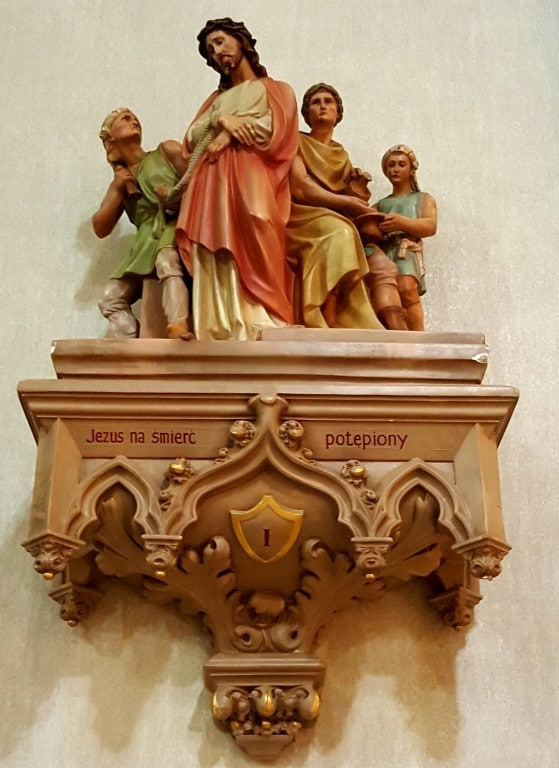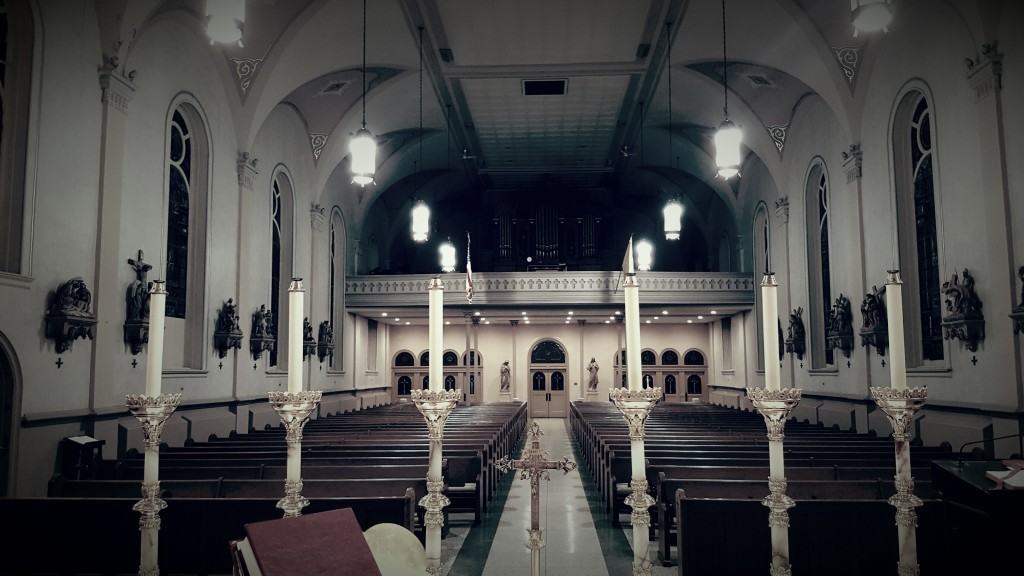Kenosha, with a population of about 100,000, is located about one hour south of Milwaukee along the shore of Lake Michigan. You might be surprised (as I was) that this city boats an impressive number of historic Catholic churches. It was a hub for many German, Polish and Italian immigrants in the last century. I was recently given a tour of Saint Elizabeth and Saint James parishes by the pastor, Father Sean Granger and the parish’s Director of Administrative Services, Dave Tomasiewicz. After the tour, they took some time to answer questions about the ongoing restoration work that is underway at both parishes. This interview will focus on Saint Elizabeth Parish.
What is the history of Saint Elizabeth Parish?
St. Elizabeth Parish was formed in the year 2000 out of the combination of the old St. George Parish (the current site of St. Elizabeth), and St. Casimir Parish, which was about a mile or so northwest of St. George. St. George was the ethnically German parish, founded in 1845, and St. Casimir was the Polish parish, established in 1901. To our knowledge, it is the only parish in Christendom dedicated to the mother of St. John the Baptist.
What inspired you take to take up this bold restoration project?
The magnificence of the church building itself, the history associated with it (the oldest Catholic church building in Kenosha, it was erected in 1866 and celebrates 150 years this year), and an ongoing renewal of the liturgical life of the parish made a restoration necessary. Years of deferred maintenance and alterations born from less traditional theologies and ecclesiologies made somewhat of a mish-mash of the place. It seemed the right time and place to restore the building to its original splendor, and the response of the people has been overwhelmingly positive.
Can you describe the work you’ve done to the parish interior?
Much has been accomplished, with the help of God and the support of the parishioners. The sanctuary and altars have been restored, the sanctuary floor has been restored, the copper roof repaired and preserved for another 150 years, an altar piece depicting our patroness, along with our Lord and St. John as children, and a seated image of our Lady, was donated, designed, executed, installed, and blessed by Archbishop Listecki, the statues of Sts. Peter and Paul at the high altar have been recreated and installed in their original places, complete sets of vesture in all the liturgical colors have been donated, pews have been repaired and restored to their original places, additional seating, especially for the handicapped, has been installed, the old and beautiful Stations of the Cross from the closed St. Casimir Church were moved and hung, etc. Now, in September, the entire building will be tuck-pointed as needed and any masonry damage will be repaired. We will then turn our attention to the windows, which are in need of work, and the completion of the interior restoration with painting, etc.
How have the faithful responded to the introduction of traditional practices, like ad orientem worship?
Response has been overwhelmingly positive. Young people and families are searching for a sense of reverence in worship, and yearn for the Church’s traditional music, catechesis, etc. We will celebrate the 40 Hours Devotion here the first weekend of October, and will offer the 10:30am Sunday Mass thereafter ad orientem on a regular basis. The other Sunday Masses will remain celebrated versus populum, thereby providing ample opportunities for all who wish to come to St. Elizabeth to pray according to the mind of the Church.


